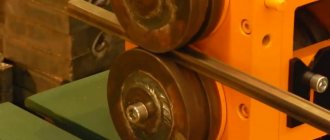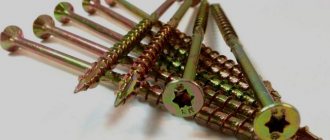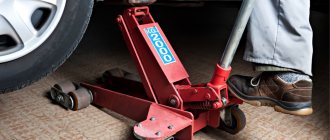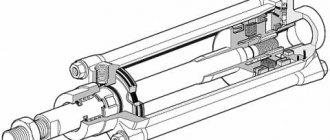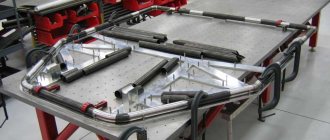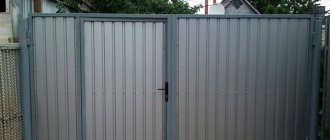The construction market offers a wide range of fasteners for connecting profile pipes. The structures that are obtained using them can be of two types - mobile and stationary.
In the first option, crab systems are most often used. This type of fastening is new on the construction market, but it has managed to prove itself from the best side.
With this mount, it is possible to make installations from pipes according to your own ideas, and the designs can also be transformed.
The crab fastening system is a universal fastener, durable and lightweight in structure. It also has a very reasonable price.
In order to install this type of fastening, you do not need to resort to gas welding. After all, welding pipes requires certain skills and special equipment. The connection of profile pipes using this fastener will be strong and reliable, almost no worse if it were welded.
Application area
The crab system has a wide range of applications. With their help they make:
- different types of greenhouses;
- market stalls;
- winter gardens and gazebos;
- advertising structures;
- beach cabins and changing rooms;
- awning structures;
- cages for birds and animals;
- equipment in trade pavilions;
- partitions in offices;
- frames for country pools;
- architectural forms and much more.
Pros of the crab system
The crab system for profile pipes has a number of advantages:
- this system can be used many times, and it will be safe for the structure itself;
- it is possible to connect the fastening yourself without resorting to the help of a gas welder;
- when dismantling the structure, you only need an adjustable wrench and no other tools;
- wide scope of application;
- with the help of this fastening the load on the structure will be distributed over the entire frame;
- fastening provides the structure with additional strength and rigidity;
Advantages
The crab system for profile pipes has the following advantages:
- Wide range of use.
- High strength, rigidity and reliability.
- Relatively light weight.
- Low cost.
- Aesthetic appearance.
- No need for welding.
- Easy to use.
- There is no need to have special equipment and experience for installation.
- High quality of the final result.
- Reusable.
- Versatility.
- The load is distributed as optimally as possible across all elements of the metal structure.
From numerous reviews of crab systems it follows that they represent the ideal combination of quality and speed of installation.
Disadvantages of elements
In addition to its advantages, this system also has disadvantages. The following are distinguished:
- this mount is only suitable for joining small pipes;
- Pipes can only be joined at an angle of 90 degrees;
- there is a risk that the connection will be broken;
- it is also possible that the geometry of the frame will be disrupted;
- If you do not treat with anti-corrosion agents, then corrosion is possible;
So, what is needed in order to install profile products using this system? You need the following:
- the crab itself for the pipes and the items necessary for the work included in the kit of this fastener;
- wrenches that have different diameters;
- if a large number of profile products are used in the work, then bolts and nuts will be needed;
What is a cross connector used for?
Drywall crab connectors allow you to connect the transverse frame strips in one plane. Most often, products are used when long longitudinal load-bearing elements require the addition of cross members. To do this, the device is placed on the longitudinal element, snapped onto it, and crossbars are inserted into the side parts.
The crab connector can withstand loads of up to 20 kg. With a greater load, additional fixation is performed with self-tapping screws through the holes on the additional legs.
Experts recommend additionally fixing each connector, as this increases the strength of the structure several times with a minimum amount of time spent.
In some cases, the device can be used to longitudinally connect profile strips. Crabs have a lower price than special connectors, while the reliability of the connection is also high.
Types of crab systems
There are three types of crab mounting systems. They are distinguished from each other by their different shapes:
T-shaped. With this fastener it is possible to connect three pipes at once that have a small diameter. With such fasteners, all installation work is simplified.
L-shaped. This type of fastener allows you to secure two pipes at the corners of the structure being created.
X-shaped. This type allows you to securely connect four pipes that are located in the center of the structure being created.
In the production of crab systems, galvanized metal is used, that is, the crab systems are galvanized. Also used in manufacturing is metal coated with a special compound (its thickness is 1.5 mm).
The fastener design itself consists of two separate elements that are connected using a bolted connection.
Installation stages
Any type of construction, even a small frame structure, begins with drawing up a plan diagram. This is the only way to correctly and in sufficient quantity calculate and purchase the necessary fasteners for profile pipes.
- The pipes are cut into pieces of the required length.
- The end of the profile is inserted into the crab clamp, and the next structural element is attached to the other side. The bolts are lightly tightened with a wrench of the required diameter.
- The fastening angles are checked, distortions are eliminated, and the connection horizon is leveled.
- The three-dimensional structure is assembled in parts, after checking the correctness and evenness of the fastening, the bolts are firmly and securely tightened. Then move on to the next element. After collecting the walls and top, they are mounted into a single frame. This stage of work is best done with an assistant.
- The crab system is regularly checked for signs of corrosion on its surface. If rust stains are detected, it must be treated with an anti-corrosion compound and coated with paint.
Peculiarities
Basically, this system is suitable for pipes that have diameters 20x20, 20x30, 40x40, 20x40. The elements that play the role of connection are fastened by pressing, and the bolts are tightened on the system itself, and not as it should be on the structure.
This fastening method does not provide high strength to the product, so the pipe that has been installed can be easily removed from this fastening.
If the metal structure is manufactured outdoors, then the crab system that is used in this case will be subject to constant influence of precipitation and temperature changes.
Because of this, the structure will become loose, so you should constantly tighten the fasteners. If this is not done, the structure may warp and become unusable.
Method of fixing profile pipes
One profile pipe is attached to another by pressing and then fixing with bolts. To make the structure more reliable, the connecting fasteners must be installed from the inside. This way you can avoid external influences that can lead to the formation of rust. And this, in turn, can lead to destruction of the installation.
The profile pipe can be secured using clamps and fittings, as well as other elements of a connecting nature. Clamps are used to fasten rectangular profiles consisting of two parts or elements, one of which is attached to the wall, then a 40x40 profile pipe is inserted into it, and the other element fixes it all with bolts.
A fitting is a fastener offered by the manufacturer that allows for the installation of elements with a rectangular cross-section.
Bottom line
This system has some disadvantages, but still it is one of the common and suitable fastening systems for various metal structures. Installing it is simple, so you can do it yourself.
And if you maintain it correctly and regularly, it is possible to extend its service life (since the structural parts themselves have a long service life).
By going to the manufacturers’ website you can see photos of crab systems and get acquainted with the types of these fasteners
Variety
The crab connection fastening system for profile pipes is divided into two types: single-level and two-level. The first type is characterized as fasteners designed to connect structural ceiling elements that need to be positioned crosswise to each other. Then they are secured with a connector on a latch, 0.6 millimeters thick. And if the load per square meter exceeds twenty kilograms, then additional fasteners are used, such as self-tapping screws.
Two-tier crab
Two-level crab systems are designed to connect cross profiles located at different levels. To do this, the elements are mounted on both sides with self-tapping screws. Before fastening, the profile pipe is brought to a U-shape.
In some cases, to avoid deformation of the structure, profiles are used in combination with single-level and two-level ones. This design is used in large buildings with suspended ceilings (photo).


